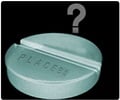Researchers completed the first American clinical trial involving stem cell-based treatment of Amyotrophic Lateral Sclerosis (ALS).
Researchers completed the first American clinical trial involving stem cell-based treatment of Amyotrophic Lateral Sclerosis (ALS). They were encouraged by the trial study's results, noting that this delivery approach could be a helpful therapeutic approach for other traumatic spine-related problems.
The group focused on the safety of a direct microinjection-based technique and neural stem cell transplantation to the cervical and thoracolumbar spinal cord. Eighteen microinjection procedures delivered NSI-566RSC, a human neural stem cell, to a total of 15 patients in five cohorts. Each of the injection procedures consisted of five injections of 10µl at 4mm intervals. Group A (n=6) was non-ambulatory and received unilateral (n=3) or bilateral (n=3) thoracolumbar microinjection. Groups B through E were ambulatory and received unilateral (group B, n=3) or bilateral (group C,n=3) bilateral thoracolumbar microinjection. Groups D and E received unilateral cervical (group D,n=3) or cervical plus bilateral thoracolumbar microinjection (group E,n=3). Detailed pre- and post-operative neurological outcomes were recorded, such as post-operative pain, as well as urologic, sensory and motor functions. The results of this study,
Intraspinal Stem Cell Transplantation in ALS, A Phase I Trial: Cervical Microinjection Safety Outcomes, will be presented by Jonathan Patrick Riley, MD, from 10:24-10:35 a.m. on Monday, April 29. Co-authors are Jonathan Glass, MD, PhD; Karl Johe, PhD; Meraida Polak, RN; Thais Federici, PhD; Eva Feldman, MD, PhD; and Nicholas Boulis, MD, FAANS.
In the results, researchers noted that the unilateral cervical (group D,n=3) and cervical plus thoracolumbar microinjections (group E,n=3) have been completed in ambulatory patients, and that no neurological worsening was witnessed to follow either cervical or thoracolumbar microinjection. The researchers did note that one cervical microinjection patient developed a post-operative kyphotic deformity, which prompted the addition of a laminoplasty in subsequent patients. Neurologic morbidity was not observed with the delivery of a cellular payload to the cervical or thoracolumbar spine spinal cord within the test groups of this at-risk patient group. This led the researchers to opinion that more consideration should be given to this delivery approach as a possible option for neurodegenerative, oncologic and traumatic spinal cord disorders.
"We are excited that the safety results of this trial have borne out what has been shown by our preclinical studies - that both the cervical and thoracolumbar spinal cord are able to safely tolerate multiple targeted injections of a cellular graft," said Jonathan Patrick Riley, MD. "These results support the exploration of the cellular graft "dose range" that may be delivered and safely tolerated. Identification of a safe dose range that the spinal cord tolerates is an important first step prior to completion of Phase II efficacy studies."
Source-Newswise

 MEDINDIA
MEDINDIA




 Email
Email








